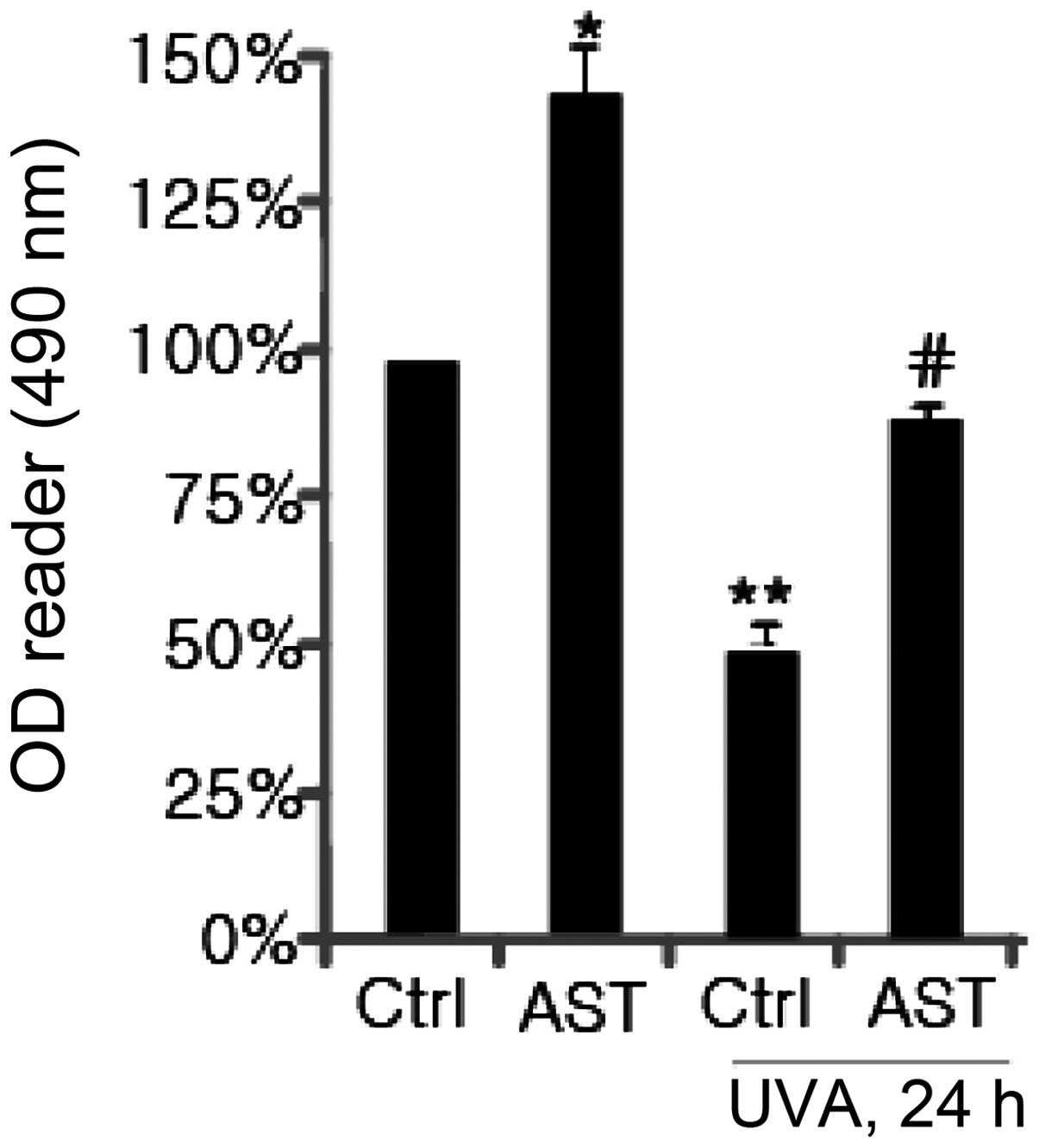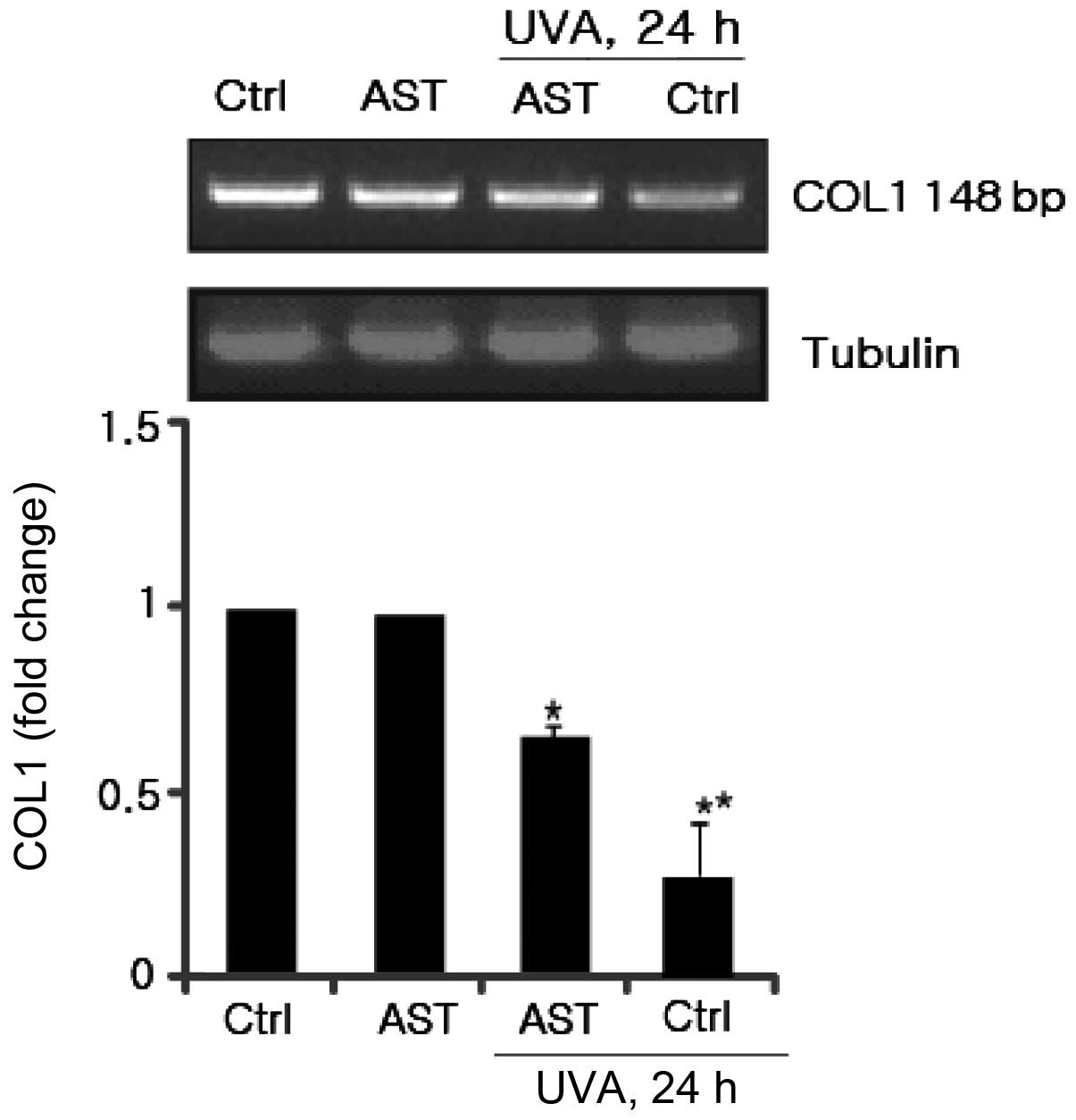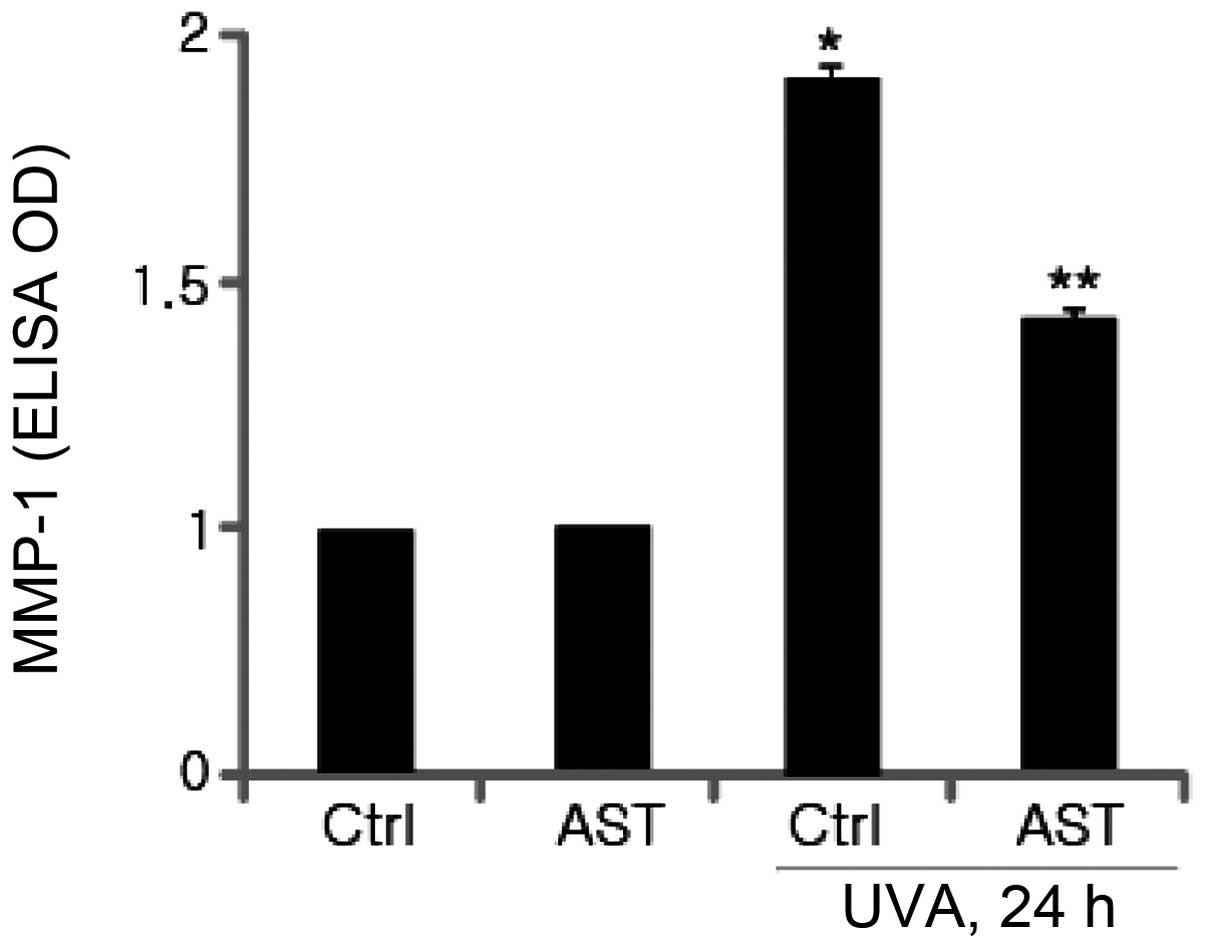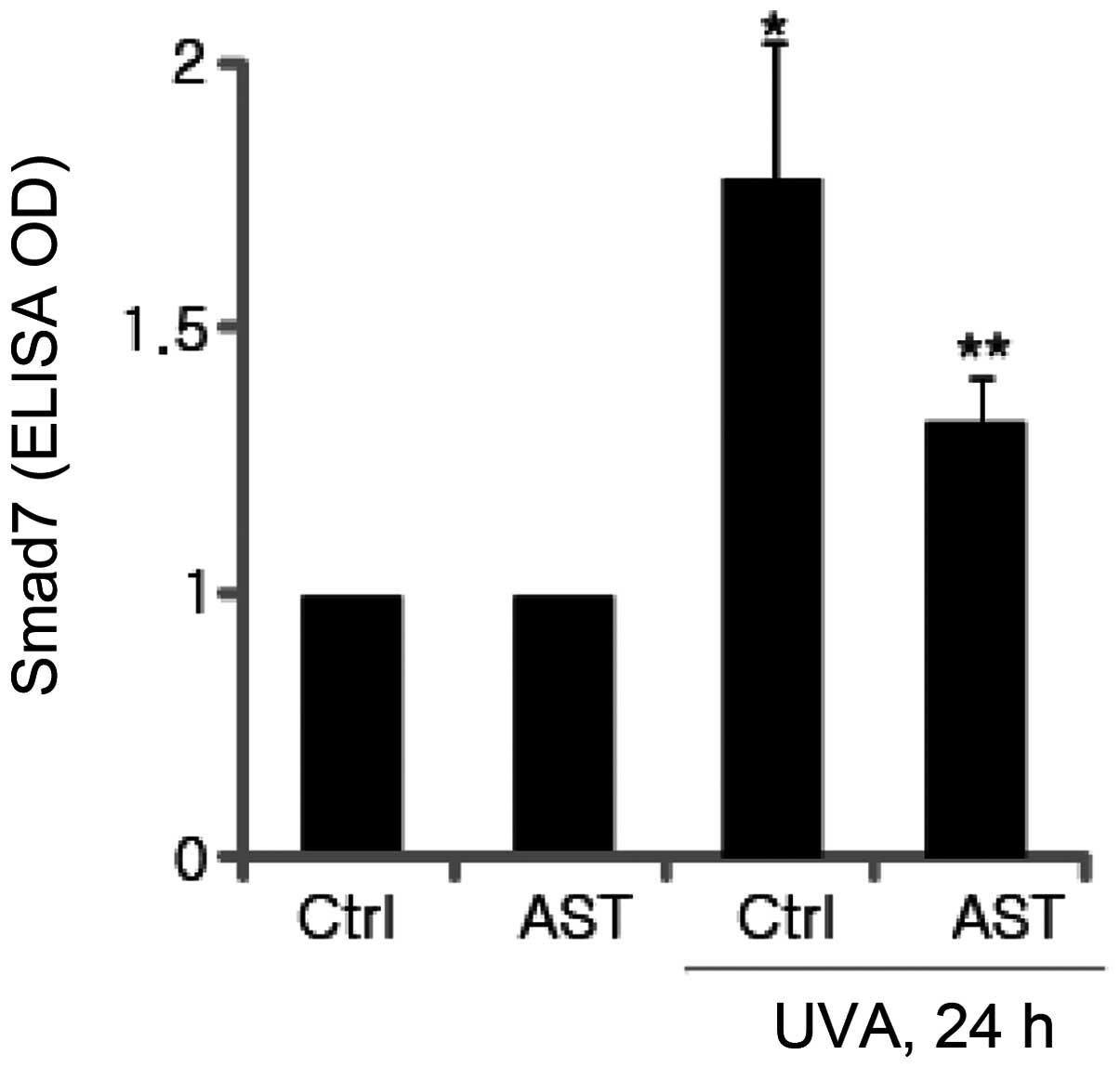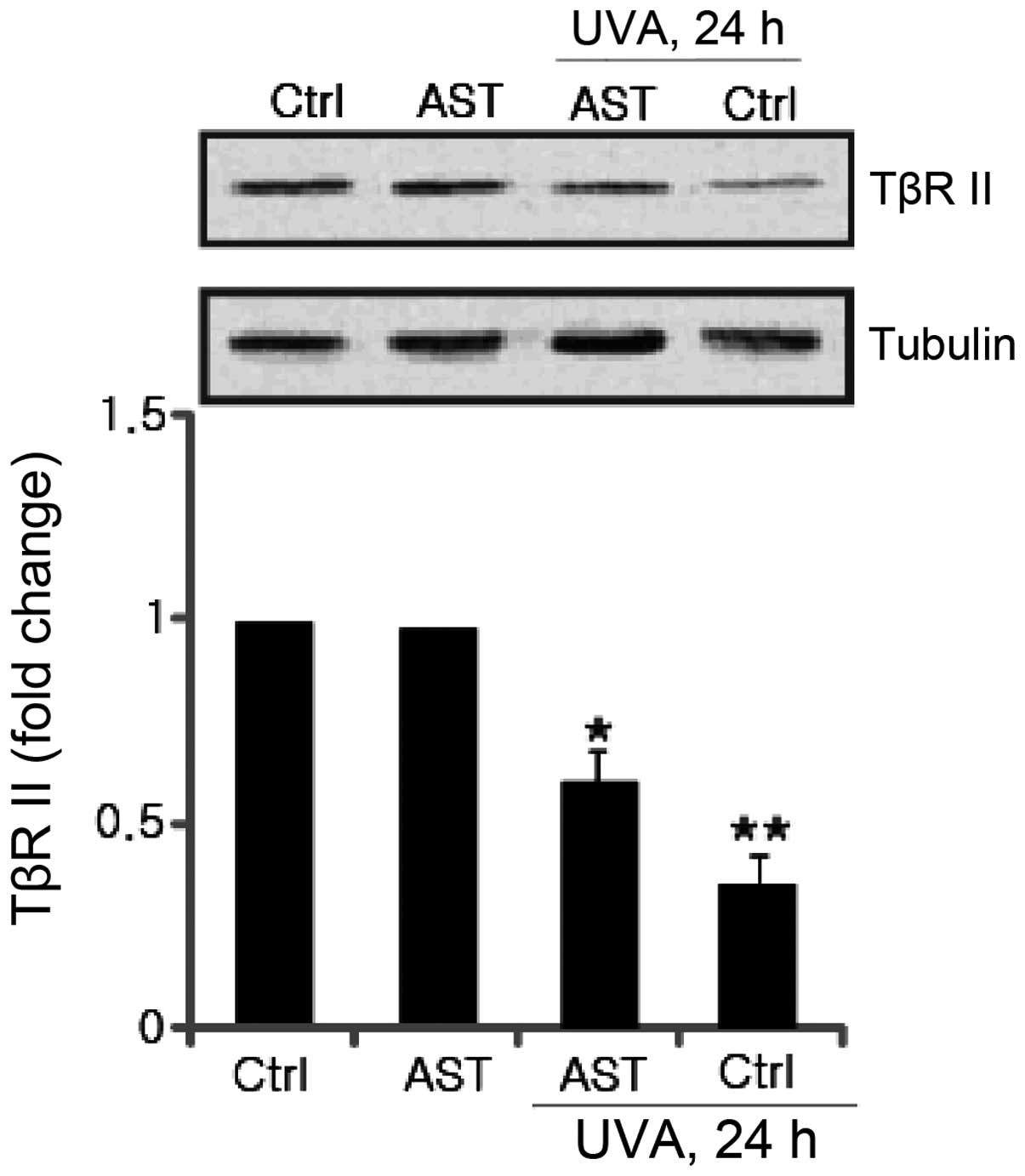Astragaloside IV controls collagen reduction in photoaging skin by improving transforming growth factor-β/Smad signaling suppression and inhibiting matrix metalloproteinase-1
- Authors:
- Published online on: January 16, 2015 https://doi.org/10.3892/mmr.2015.3212
- Pages: 3344-3348
-
Copyright: © Chen et al. This is an open access article distributed under the terms of Creative Commons Attribution License [CC BY_NC 3.0].
Metrics: Total
Views: 0 (Spandidos Publications: | PMC Statistics: )
Total PDF Downloads: 0 (Spandidos Publications: | PMC Statistics: )
Abstract
Exposure to ultraviolet (UV) light reduces levels of type I collagen in the dermis and results in human skin damage and premature skin aging (photoaging). This leads to a wrinkled appearance through the inhibition of transforming growth factor‑β (TGF‑β)/Smad signaling. UV irradiation increases type I collagen degradation through upregulating matrix metalloproteinase (MMP) expression. Astragaloside IV (AST) is one of the major active components extracted from Astragalus membranaceus. However, its multiple anti‑photoaging effects remain to be elucidated. In the present study, the effects of AST against collagen reduction in UV‑induced skin aging in human skin fibroblasts were investigated. The expression of type I procollagen (COL1), MMP‑1, TGF‑βRⅡ and Smad7 were determined using reverse transcription‑polymerase chain reaction, western blotting and ELISA, respectively. UV irradiation inhibits type I collagen production by suppressing the TGF‑β/Smad signaling pathway and increasing COL1 degradation by inducing MMP‑1 expression. Transforming growth factor‑β type II protein and COL1 mRNA decreased but MMP‑1 and Smad7 levels increased in the photoaging model group, which was reversed by topical application of AST. AST prevents collagen reduction from UV irradiation in photoaging skin by improving TGF‑β/Smad signaling suppression and inhibiting MMP‑1, thus AST may be a potential agent against skin photoaging.




